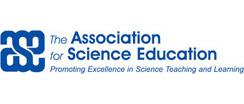Differentiation in science
This set of resources supports Heads of department and classroom teachers in developing strategies for differentiation in science. These resources accompany the Triple Science Support guide to differentiation.
The Triple Science Support intervention guides and supporting resources are packed full of ideas and examples of evidence-based good practice, and will support you in going beyond short term, bolt on interventions to look at issues such as progression, tracking progress and how best to structure learning so students gain a deep, long term understanding of the science.
- ALL
- Teacher guidance
- Research
- Video
- Article
- Activity sheet
- External link
Teacher guidance
Enriching School Science for the Gifted Learner
There is a good section on curriculum compacting starting on page 11, plus many more ideas to aid differentiation for more able students.
Supporting Access in Science
This ASE resource includes guidance and ideas, including useful differentiation ideas specific to science. The guidance was produced considering the key areas of special needs that may create barriers to learning. The five areas include: communication and interaction, cognition and learning, sensory and/or physical needs, behaviour, emotional and social development as well as medical conditions.
Research
Children with communication difficulties in mainstream science classrooms
This article, by W. and J. Wellington, explores some of the problems that children with communication difficulties face in learning science, its vocabulary, and its own particular language. Practical ideas and strategies are suggested for helping to overcome these barriers in mainstream schools.
Catering for Dyslexia - how others benefit
Dyslexia affects a significant proportion of the UK population and can be a barrier to learning in science. There are a number of techniques teachers can employ to alleviate the problems dyslexic students face with both practical and written work in science. These have been found to improve learning conditions for dyslexics, but also represent good teaching practice and can be of benefit to all learners in science.
Video
The Use of Velcro in Special Needs Science Lessons
Some students find it difficult to take in information from a static display, and so teachers at Forest School use Velcro to make versatile displays. Other strategies described include using pictures to help sequence lessons and the use of large number lines to help students analyse data.
The Use of Cameras in Special Needs Science Education
The case study which goes with this film gives a range of ways that a camera can be used to support SEN students.
Using frames to support learning
Helen Walker and Karen Ashforth from Birley Community School share their ideas to assist students with special educational needs in their understanding of key science lessons through a structured and visual approach.
The department developed an A3 laminated writing frame which would overlay an A4 picture to stimulate discussion and guide writing. A template for the frame is provided in the appendix together with some practical tips.
Article
Putting differentiation into practice in secondary science lessons
This article, by Andy Piggott, looks at various approaches to differentiation and how they can be put into practice.
The enrichment and extension activities for the electrolysis lesson described on page 70 can be found here: https://www.stem.org.uk/rxx9e
Activity sheet
Equipment Flashcards
These flashcards provided by ASE can be used in a variety of ways to help students familiarise themselves with the names of scientific equipment. The flashcards show the name, a coloured photograph and a two-dimensional line diagram for the main scientific equipment that you will find in a science laboratory.
Word Banks and Keywords
This ASE collection of science wordlists has been developed with a view to supporting students' progression in science. The resource has keyword lists of new vocabulary encountered each year of secondary science. The wordlists are based on the National Curriculum, including some vocabulary that would have been covered in primary science. The lists are presented in a variety of formats that can be edited to suit your own needs.
The word banks can be displayed or given out to students. New words in a lesson can be marked off on the list, ensuring the students understand their meanings
Let's Investigate
These ASE resources illustrate an approach to investigations for students with specific, moderate or severe learning difficulties in a special school. The ideas described here are used to help individual students progress and can be applied to any mainstream or special school situation.
External link
How to differentiate instruction in mixed ability classrooms
There is a wealth of information and ideas for differentiation in this book. Well worth buying for the department!
The book looks at how to differentiate, or structure, lessons at every level and content area to provide scaffolds for
- The content of lessons,
- The processes used in learning, and
- The products of learning.
Teachers can draw on the book's practical examples as they begin to differentiate instruction in their own classrooms. Strategies include curriculum compacting, sidebar investigations, entry points, graphic organizers, contracts, and portfolios
An ASCD Study Guide for How to Differentiate Instruction in Mixed-Ability Classrooms
This study guide is designed to enhance your understanding of How to Differentiate Instruction in Mixed-Ability Classrooms (above) and can be used after you have read the entire book or as you finish each chapter. The study questions provided are not meant to cover all aspects of the book, but are intended to address selected ideas which might warrant further reflection.
Most of the questions contained in this study guide are ones you can think about on your own. But you might also consider pairing with another colleague or working through it as a department
Using Curriculum Compacting To Challenge the Above-Average
This is a detailed description of curriculum compacting – a strategy devised by Renzulli to enable higher starters (“advanced learners”) to maximise their use of time for learning.
Curriculum compacting is a flexible, research-supported instructional technique that enables high-ability students to skip work they already know and substitute more challenging content.
Dare to differentiate: curriculum compacting
Some useful examples of how you can compact the curriculum for higher starters (advanced learners).
Thinkers Toolbox
A whole range of resources, ideas, scaffolds and teaching ideas to support students in developing their thinking skills.
"The cognitive operations that make up thinking need to be explored, explained, taught and practiced over and over in a variety of contexts using a variety of strategies before they can be mastered. We must therefore allow students to be individuals and complete tasks in their own way, to challenge ideas and reflect on tasks. Learners will then gain deeper understandings of concepts, be more critical, confident and in turn creative"
Strategies that differentiate instruction
This booklet provides a range of strategies for differentiation, including:
Differentiation Basics
Content, Product, and Process
Know, Understand, and Do
Tiered Instruction
Menus
Cubing
Tic-Tac-Toe
Socratic Seminar
Layered Curriculum
Differentiating Instruction with Technology
Examples of tiering
There is a good introduction to tiering here, and videos explaining the process and plenty examples of tiered assignments and lesson plans.
Pam Hook's website: SOLO taxonomy
This is useful website for those new to using SOLO taxonomy to create differentiated learning intentions.
Using pictures
You can use pictures to differentiate instructions for practical work.
Choice boards
Sometimes you might want to allow the students to manage their choice of task (whilst keeping an eye out for ‘strategic’ learners). Choice boards (also known as learning menus) are a good example of this approach, in which there are a variety of approaches towards common learning goals. This typifies high challenge and low threat, as the students engage with the perception of free choice.
Graphic organisers
Graphic organisers can be used to differentiate the thinking skills and strategies employed. Here's a variety of examples, including bubble, double-bubble or Venn diagrams, model/mind maps, compare-contrast maps, fishbone diagrams and so on.
Supporting-pupils-with-specific-learning-difficulties: Dyslexia
This booklet is packed full of ideas which can be used in the classroom to support students with dyslexia.




